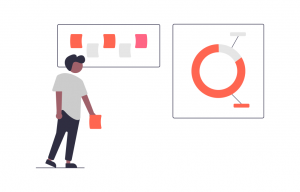
31 Aug Evolution in Customer Retention Strategies
The biggest objective of Customer Retention is not only to hold customers engaged and interested by the products and services but to make them the brand ambassadors of the company. Thanks to continuously-evolving technology and customer expectancies, customer retention is currently in the midst of a primary shift towards customer-centric engagement and personalization.
Customer retention has historically taken a backseat to acquisition efforts, as validated with the aid of the reality that customer retention commonly has a much smaller budget allocation. The number of agencies’ customer retention tactics frequently comes all the way down to regularly occurring loyalty programs, nurture campaigns, and reductions. While some groups upload simple automation to their nurture campaigns, which trigger timed communications when customers first purchase or sign-in, those campaigns are nonetheless a one-size-suits-all technique.

Over a decade ago, customer retention-targeted roles had been few and a long way between, which pondered the low priority Customer retention held on the time. However, more recent observations show a drastic shift in priorities; increasingly more agencies are allocating assets to cognizance on customer retention. In a recent study, 70% of marketers stated that their Customer retention is average at fine, with room for significant improvement. More than anything, the fact that entrepreneurs are acknowledging the need for growth in customer retention is a sign of changing times – and the rising importance of Customer retention.
This new focus on Customer retention is ordinarily because of customer desire having reached an all-time high even as interest spans have dipped to an all-time low. This manner of businesses needs to take a greater customer-centric method to be able to keep them involved. Customers now call for an extra engaging and personalized experience, and businesses must respond hence so one can nurture them into advocates.
Nurturing as many of your customers into advocates as possible makes good business sense. Research over the past few years continues to prove that current customers are worth more than newly acquired ones. According to Gartner Group, 80% of your employer’s future sales will come from just 20% of your existing customers. While Adobe suggested that online outlets spend nearly 80% of their digital marketing budgets obtaining buyers, for each 1% of customers who return for a second visit, typical revenue will grow by approximately 10%. This approach if accepted by online stores to retain 10% of their present customers, they could double their revenue.
The numbers don’t lie: it’s clear to peer that customer retention is greater valued than acquisition. So, with all this evidence available, why are so many of businesses still more centered on acquisition?
One purpose will be that acquisition campaigns yield faster, extra measurable outcomes than customer retention campaigns. Acquisition’s Return on Investment (ROI) can in-reality be calculated by evaluating how much you spent on marketing as opposed to how many customers made a buy. In evaluation, customer retention takes into account the potential value of a customer over time, based on their behaviour and spending habits, instead of completely focusing on the consequences of one transaction. As a result, the effectiveness of a customer retention campaign takes longer to measure than simply counting one-off sales.

Good customer service can also help both pre and post-sale by permitting customer service representatives to clearly speak with the customer.
Having a live chat or help desk service available can turn a customer query or a customer criticism into a sale, whether they come in on website, online, through email, or through social media. Very often, an effectively resolved complaint or problem can turn an unhappy customer into a devoted, consistent customer. And it really is to say nothing of the cost of customer remarks, which allow you to improve your merchandise and your overall buying experience. Many companies are now taking a leap into improving their customer service and support desk. Over the years, Companies have allowed their communication through multiple channels to provide their customers with the best experience.
Another factor is that a successful retention campaign requires greater and advanced technology than acquisition campaigns. The muse of customer retention is knowing what your customers want and providing a personalized experience. The key to figuring out what the customers want lies in decoding the trail of prints they leave at the back of transactions and online behaviour. When analyzed efficaciously, this record can offer the in-depth knowledge about how businesses need to supply relevant and personalized material. Companies have already got the statistics and records they need; the primary task is in deciphering it.

Until recently, most effective companies like Amazon could afford the technology and data scientists that were needed to interpret this customer data. However, as Customer retention is becoming increasingly more crucial, there may be more call for third-party companies to offer that technology as a provider. This permits agencies who doesn’t have the funds for the technology the ability to improve their Customer retention campaigns around customer data. This trend successfully ups the gambling as long as companies embrace the technology.
The increasing demand for this technology gives us an idea about how the scenery has changed from the early days of Customer retention. Marketers now see customer retention as a priority instead of a secondary strategy to acquisition efforts. The key to powerful customer retention lies in understanding and acknowledge the needs of customers and structuring their campaigns accordingly.
The future of marketing lies in customer retention and most of the companies have accepted it to shape their services towards a better customer experience.

